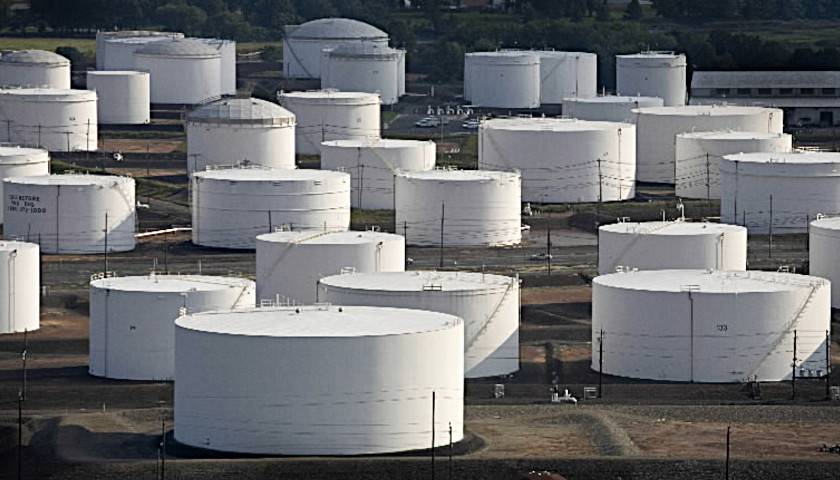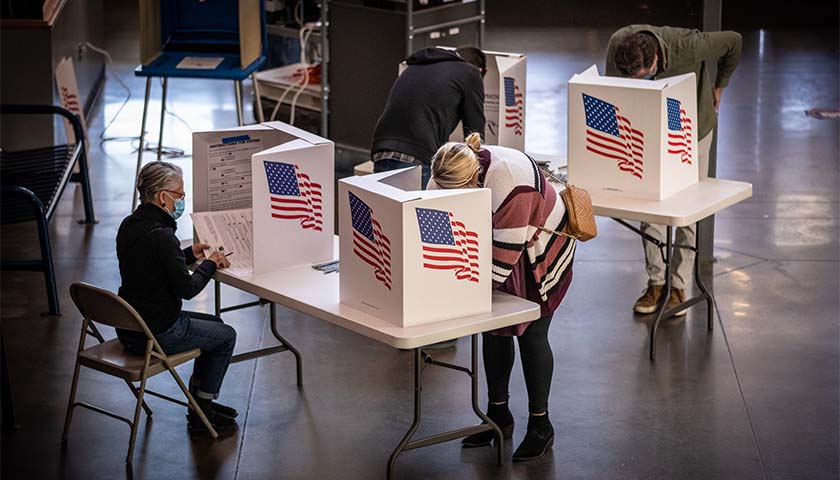by Kevin Killough
The Biden Administration announced Tuesday that it would release 42 million gallons of gasoline from the Northeast Gasoline Supply Reserve. The release, the Department of Energy explained, is “strategically timed and structured to maximize its impact on gas prices.” This will, according to the DOE, help lower prices at the pump during the summer months when prices tend to go up along with demand.
The Northeast Gasoline Supply Reserve was created in 2012 following Superstorm Sandy, which damaged two refineries and shut down 40 terminals in New York Harbor. Some New York gas stations went as long as 30 days without a supply of gasoline as a result of the supply disruption. The Obama administration established the gas reserve to prevent such a shock from happening again.
The 2024 Consolidated Appropriations Act, which became law in March, included language requiring the DOE to sell off the inventory from the reserve and shut it down once it was drained.
David Blackmon, energy writer and analyst, told Just The News that it was a shortsighted move on the part of Congress. There are all kinds of potential disruptions on supply, he said, that could make having a stockpile a good idea. “Just three years ago, Colonial Pipeline suffered a cyber attack. That was down for two weeks, and you’ve got a gas shortage all over the region,” Blackmon said.
Managing prices
In 2022, as the Russian invasion of Ukraine sent gas prices soaring ahead of the midterms, President Joe Biden tapped the Strategic Petroleum Reserve (SPR) to bring the politically inconvenient prices down.
Unlike the SPR, the Northeast Gasoline Supply Reserve was already slated to close, but the timing of the move suggests Biden still has a strong interest in managing gas prices ahead of an election.
“This is a move simply to try to keep gas prices in check. There’s no actual supply disruption issue or risk to national security. We are entering a high demand season for gasoline, and prices are trending higher. So, I think it’s just an attempt to check that price rise,” Robert Rapier, a chemical engineer and editor in chief of Shale Magazine, told Just the News.
The DOE has been seesawing between commitments to refill the SPR and eying it as a solution to high gas prices. On May 7, the DOE issued a request to buy 3.3 million barrels of oil in the agency’s ongoing effort to refill the reserve. This came just two days after Amos Hochstein, Biden’s energy advisor, said that there was enough in the reserve to address supply concerns, which he said the president is willing to do.
The DOE awarded contracts last week for that May 7 request, while issuing another request for 3 million barrels of oil. While it appears that the DOE is continuing the path to replenishing the stockpile, Rapier has doubts it will get far.
Writing in Forbes, Rapier explains that the oil in the SPR is stored in underground salt caverns with an authorized capacity of 714 million barrels, which makes it a valuable tool in foreign policy and a significant deterrent to other countries that might try to cut off oil imports to the U.S.
By June 2023, the SPR was at 347 million barrels after Biden drained 291 million barrels from it. Not including the latest buy, the DOE returned about 4.8% of that.
In April, the DOE decided not to award contracts for an oil supply request due to high oil prices. In January, Rapier predicted that the Biden administration wouldn’t fill more than 10% of the oil it removed, because Biden wouldn’t want to drive up oil prices ahead of the election.
Including the latest contracts the DOE awarded, the Biden administration has only managed to purchase 17.3 million barrels. This is a little more than half of what it would need to purchase to replenish 10% of what it depleted by November.
Rapier said in an interview he doesn’t think that will happen.
Voter concerns
With polls showing the state of the economy as a key concern for voters, gas prices are likely to be an important issue in the presidential election.
According to AAA, Wednesday’s national average gas price was $3.61 per gallon. In mid-June 2022, the average national gas price, according to the Energy Information Administration, was $5.00, which was the highest it had been.
Throughout May, Americans for Prosperity (AFP) is partnering with gas stations across the country to sell gasoline at $2.38, which was the average price at the start of the Biden administration. The AFP is hoping its “National Gas Rollback Tour” will highlight how Biden’s economic and energy policies are driving up gasoline prices.
“Biden’s war on American energy has had disastrous results and Americans are reeling from high gas prices going into the summer. From shutting down the Keystone Pipeline to banning energy leases on federal land, Joe Biden’s top-down policies have stifled our country’s energy resources and made even things like a family road trip more expensive,” Akash Chougule, vice president of government affairs for AFP, said in a statement. Tapping the SPR further isn’t a popular move among energy experts, because it takes more oil off the market and refilling it risks high gasoline prices down the road.
But with polls showing Biden trailing behind the presumptive Republican nominee Donald Trump, it’s not likely that high gas prices are something Biden will be willing to weather.
– – –
Kevin Killough is a reporter at Just the News.





